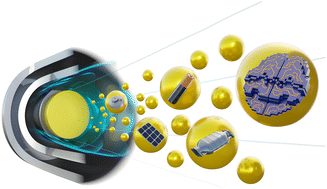Gas-phase synthesis of nanoparticles: current application challenges and instrumentation development responses
Abstract
Nanoparticles constitute fundamental building blocks required in several fields of application with current global importance. To fully exploit nanoparticle properties specifically determined by the size, shape, chemical composition and interfacial configuration, rigorous nanoparticle growth and deposition control is needed. Gas-phase synthesis, in particular magnetron-sputtering inert-gas condensation, provides unique opportunities to realise engineered nanoparticles optimised for the desired use case. Here, we provide an overview of recent nanoparticle growth experiments via this technique, how the latter can meet application-specific requirements, and what challenges might impede the wide-spread adoption for scalable industrial synthesis. More specifically, we discuss the timely topics of energy, catalysis, and sensing applications enabled by gas-phase synthesised nanoparticles, as well as recently emerging advances in neuromorphic devices for unconventional computing. Having identified the most relevant challenges and limiting factors, we outline how advances in nanoparticle source instrumentation and/or in situ diagnostics can address current shortcomings. Eventually we identify common trends and directions, giving our perspective on the most promising and impactful applications of gas-phase synthesised nanoparticles in the future.

- This article is part of the themed collections: 2023 PCCP Reviews and Stability and properties of new-generation metal and metal-oxide clusters down to subnanometer scale


 Please wait while we load your content...
Please wait while we load your content...